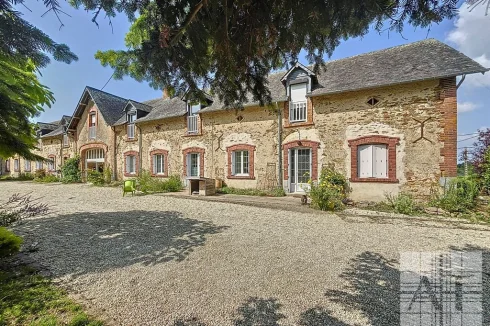Can a Farmer Build Next to my French Property?
Tuesday 05 April 2016
Whilst administrative controls exist on the proximity of farm livestock buildings to residential property, the buildings can be uncomfortably close.
Broadly speaking, there are two levels of control for bâtiments d’élevage, one governed by health regulations and one governed by local and national planning regulations.
In relation to both types of regulations a minimum perimeter of protection must be maintained, with the distance measured between the buildings, not the boundary of the properties.
These regulations operate on a reciprocal basis, so that no residential property can be constructed within the distances specified. This rule applies equally to extensions of an existing residential property. The residence of the farmer is exempt.
As well as buildings housing livestock, the regulations also apply in relation to associated buildings, such as silos, buildings used for storage of animals fodder and storage and treatment of effluent, although in some cases the permitted distances for these buildings may be lower. Buildings for the storage of farm machinery and equipment are not included within this definition.
In exceptional circumstances, where for instance the farmer is required to upgrade facilities to comply with regulations, but cannot do so by maintaining the distances, it is possible for these thresholds to be reduced.
In practice, in order to ensure no nuisance is caused, the vast majority of farmers have the good sense to exceed these minimum requirements, and local planning regulations sometimes specify greater distances.
One reason why farmers may be respectful is that, whatever the permitted distance, an action on grounds of nuisance can always be brought, although the difficulties and costs associated with such an approach should not be underestimated, particularly if the minimum distance is being respected.
Health Regulations
The Règlement Sanitaire Départemental (RSD) governs the proximity of a maximum number of animals for 'petites élevage', that is to say, small-holdings.
The maximum number of animals permitted under these regulations depends on the type of animal and local regulations.
However, broadly speaking, in relation to cows, pigs, lambs, it is 49 animals; up to 9 dogs can be kept, and in relation to poultry, it depends on the type of bird, but can be up to five thousand birds!
Poulty is also defined by ‘animal equivalent’ number, so whilst a standard chicken is one animal equivalent, a large turkey is 3.5 and a duck being reared for foie gras is equivalent of to up to 7 animals.
The distances to be maintained do vary by type of animal, but as a general rule it is a meagre 50 metres. In relation to pigs it is 100 metres, although it is only 50 metres in relation to free range animals.
In addition to maintaining a distance between properties, animal farm buildings must also maintain a minimum distance of 35 metres from water courses and wells.
There are local variations in the regulations, with the distances in some cases down as low as 25 metres, so for complete accuracy you need to consult your local prefecture or council.Planning Regulations
Once the maximum number of animals permitted under health regulations is exceeded, then the farm becomes a special planning category of property, called an Installation Classée, governed by the réglementation des installations classées pour la protection de l’environnement (ICPE).
There are different procedures that operate under these regulations, depending on the type and scale of the operation, some that merely require a declaration and others that require specific authorisation.
However, the broad rule of thumb is that a building for livestock must be at least 100 metres away from any residential property. In mountain areas the distance can be reduced to 75 metres.
Nevertheless, local councils, through their local plan, can adopt a different rule, of greater or smaller distance, and the local prefet is also authorised to reduce the distance, provided it is not likely to cause a nuisance to the neighbour.
Accordingly, unless clearly set out in the local plan, the legal safeguards for a home-owner are somewhat opaque, although in practice most farmers have the good sense to wish to live amiably with their neighbours.
As with the health regulations, animal farm buildings must also maintain a minimum distance of 35 metres from water courses and wells.
Once again, there are some minor local variations, although not all councils adopt them or are permitted to use their discretion due to the lack of a planning framework.
Next Article: Local Rates Allowances 2016
Thank you for showing an interest in our News section.
Our News section is no longer being published although our catalogue of articles remains in place.
If you found our News useful, please have a look at France Insider, our subscription based News service with in-depth analysis, or our authoritative Guides to France.
If you require advice and assistance with the purchase of French property and moving to France, then take a look at the France Insider Property Clinic.





